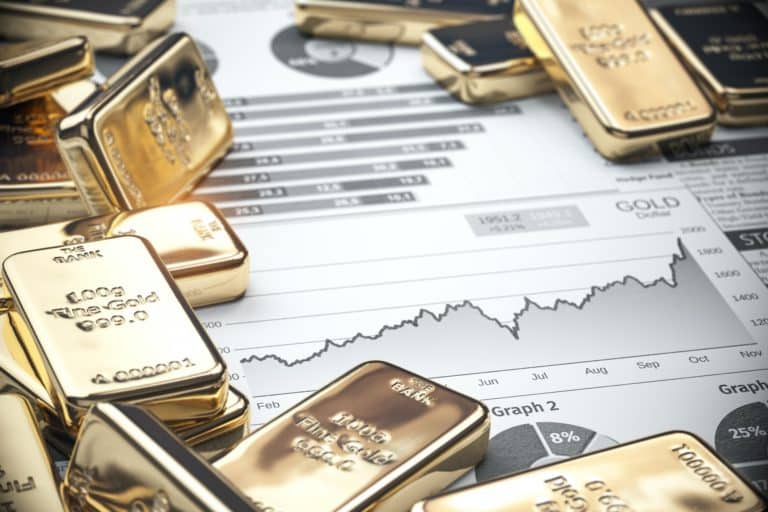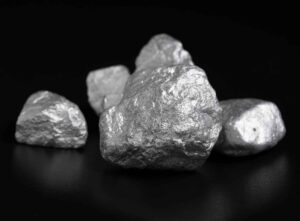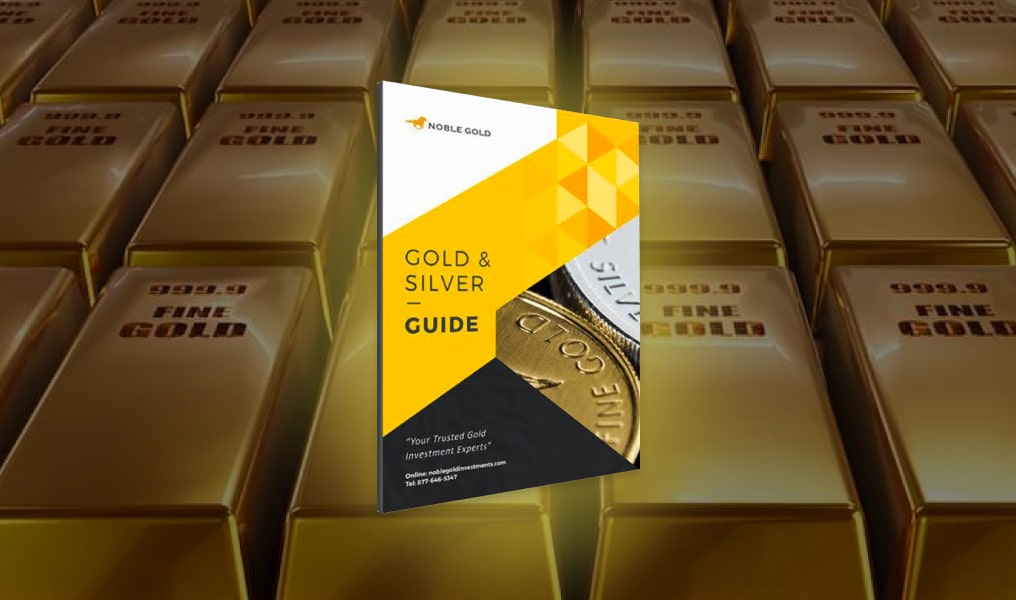The global pandemic has thrown economies into disarray, highlighting the need for safe-haven assets and robust investment strategies that can withstand the impact of market disruptions. Amid these turbulent times, gold and silver have proven to be beacons of stability, demonstrating their value as timeless stores that can weather economic storms and liquidity constraints.
If you’re considering expanding your investment horizons, a firm grasp of the factors influencing gold and silver is important. Understanding the nuances of precious metal market liquidity, especially during economic downturns, will give you the insights you need to manage your investment portfolio effectively.
The Impact Of Market Liquidity On Gold And Silver
Understanding the impact of market liquidity on gold and silver pricing, volatility, and transaction costs can provide valuable insights to investors. This can help make informed investment decisions that potentially improve investment outcomes in the volatile world of precious metals trading.
Price Discovery
The market liquidity is determined by the number of active buyers and sellers and helps determine the price of assets such as gold and silver. In markets with high liquidity, the supply and demand of assets can seamlessly adjust prices in response to new information. This dynamic interaction helps produce accurate and fair prices that reflect the asset’s true value.
However, in markets with lower liquidity, the price of assets such as gold and silver can be vulnerable to sudden changes or manipulation because there aren’t a large number of buyers and sellers. In such markets, a large transaction can significantly change the price of the asset. This can lead to a distorted market scenario where the price of an asset may not reflect its true value, resulting in potential losses for investors.
Market Liquidity And Volatility
Large transactions can occur in highly liquid markets without causing major price shifts. This is because the high trading volumes in these markets can easily absorb such transactions, ensuring that gold and silver prices remain relatively stable. This stability benefits investors by reducing the risk of unexpected price fluctuations, providing a more predictable investment environment.
However, in markets with lower liquidity, large transactions can significantly impact the price of gold and silver since the limited trading volumes cannot absorb these transactions as easily, leading to substantial price fluctuations. These fluctuations can lead to increased volatility, which can amplify the risks associated with investing in gold and silver. This increased volatility can lead to larger potential gains but also larger potential losses.
Transaction Costs
In a liquid market, the spread, which is the difference between the asking price (the price at which one can buy an asset) and the bid price (the price at which one can sell), is typically narrow. The asking price is always slightly higher than the bid price, and this difference is the cost that investors pay to execute a trade.
In highly liquid markets, the small spread means lower transaction costs, making the trading process more cost-efficient. This allows investors to buy and sell assets without significantly impacting their investment returns, which is particularly beneficial when trading frequently or in large volumes.
However, the situation can be quite different in markets with lower liquidity, where the spread can widen considerably. This means that the difference between the price you can buy at and the price you can sell at is larger, resulting in higher transaction costs.
These higher costs can eat into investors’ potential profits, reducing the net return on their investment. For example, if an investor needs to pay a widespread to buy an asset and then again to sell it, their investment needs to appreciate significantly just to break even.
Analyzing Lessons From Past Recessions
Past recessions provide valuable insights into the impact of economic downturns on the gold and silver markets. Understanding these lessons can help investors make informed decisions and develop robust investment strategies to weather economic storms.
Historical Trends Of Gold And Silver Prices During Stock Market Crashes
The historical performance of gold and silver prices during stock market crashes offers valuable insights to investors. The chart below shows that gold and silver often behave differently during economic downturns. It’s important to note that these trends don’t always apply and should not replace thorough research and professional advice.
| Period | Stock Market Crash | Gold Price Movement | Silver Price Movement |
| 1973-1974 | Oil Price Shock | Increased | Increased |
| 1987 | Black Monday | Decreased | Decreased |
| 2000-2002 | Dotcom Bubble Burst | Increased | Decreased |
| 2008-2009 | Global Financial Crisis | Increased | Increased |
The Great Depression
During The Great Depression of the 1930s, prices for these precious metals remained relatively stable, providing a safe haven for investors seeking to protect their assets. This stability highlighted the value of gold and silver as a store of value during economic uncertainty.
The global economic crisis also highlighted the importance of investing in long-term assets. While the price of gold and silver remained stable during the Depression, it took several years for their values to rebound significantly. This lesson emphasized the importance of patience and long-term investment strategies that can withstand short-term market fluctuations.
The 1970s Oil Crisis
The oil crisis of the 1970s caused the prices of gold and silver to skyrocket as inflation soared. During this time, both precious metals provided a hedge against inflation and currency devaluation as their value soared amid the economic turmoil.
It also demonstrated that gold and silver aren’t immune to market fluctuations. While their value skyrocketed during the crisis, they also experienced price declines once inflation was controlled. This lesson highlighted the importance of diversifying investment portfolios, as no asset class is immune to market fluctuations.
The 2008 Financial Crisis
The 2008 financial crisis exemplifies how gold and silver prices can behave during a recession. Initially, gold and silver prices fell as investors tried to raise money amid the turmoil. However, as the crisis continued, the prices of these precious metals rose again, with gold reaching record highs.
Despite the short-term drop in prices, the subsequent rebound in their prices highlighted the value of gold and silver as a store of value and a hedge against economic instability. This lesson has been invaluable to investors seeking to protect their assets during subsequent economic downturns.
Developing Strategies For The Future
The lessons learned from past recessions provide valuable insights into developing investment strategies that can withstand future economic downturns. By implementing these strategies, investors can protect their wealth and potentially achieve long-term success in gold and silver investing.
Stay Informed
Closely monitoring economic indicators, such as inflation rates, interest rates, gross domestic product (GDP) growth, and employment rates, can help investors better understand the economy’s overall health. These indicators can provide insights into potential economic shifts that could influence the financial markets, including the gold and silver markets.
For instance, rising inflation rates could indicate a devaluation of currency, increasing the attractiveness of gold and silver as a store of value. Similarly, changes in interest rates could impact the opportunity cost of holding gold and silver, influencing investor demand for these metals. By keeping track of these indicators, investors can anticipate market movements and adjust their investment strategies accordingly.
It’s also important for investors to keep track of gold and silver market dynamics. This includes keeping an eye on supply and demand trends, geopolitical events, and regulatory changes that can impact the mining and trading of these precious metals.
For example, an increase in demand for gold and silver, whether due to economic uncertainty or increased industrial usage, could drive up prices. On the other hand, geopolitical tensions or regulatory changes could disrupt supply and influence prices.
Diversifying Investment Portfolios
Adding gold and silver to an investment portfolio can help mitigate risk and protect against market downturns, as they have historically proven resilient during economic crises and recessions. These precious metals offer a unique opportunity for diversification due to their low correlation with other asset classes.
Many investors use gold and silver as safe investments during times of uncertainty. By adding these precious metals to their portfolios, investors can improve long-term performance and hedge their investments against market fluctuations.
Timing Market Entry And Exit Points
Entry points are when you buy an asset, ideally when prices are low, to maximize your potential returns. Identifying these points requires thoroughly examining market conditions, trends, economic indicators, and market sentiment.
However, it’s equally important to consider the long-term prospects of the asset to avoid buying into a declining market. On the other hand, exit points are when you choose to sell an asset, preferably when prices are high. Determining these points can be complex because selling too early might result in missed profits while selling too late could lead to losses.
To effectively time your exit points, consider your investment goals and risk tolerance. If an investment has reached a predetermined target or its associated risk surpasses your comfort level, it might be time to sell. Changes in market conditions, such as economic downturns or negative news about the asset, might also signal potential exit points.
Remember, while consistently timing the market perfectly is nearly impossible, informed and strategic decisions can enhance your chances of profitable investments.
Hedge Against Market Volatility With Precious Metals
You deserve options that align with your financial goals and risk tolerance. Whether you’re a hands-on investor who prefers the tactile experience of owning physical bullion or a forward-thinking individual who wants the tax advantages of a Precious Metals IRA, Noble Gold Investments offers a wealth of gold and silver investing options. These timeless assets provide a safe haven during economic turmoil and a hedge against inflation, increasing the resilience of your portfolio.
Give us a call or click here to start investing in gold and other precious metals. Our team will guide you through the process and provide the tools you need to make informed investment decisions.







